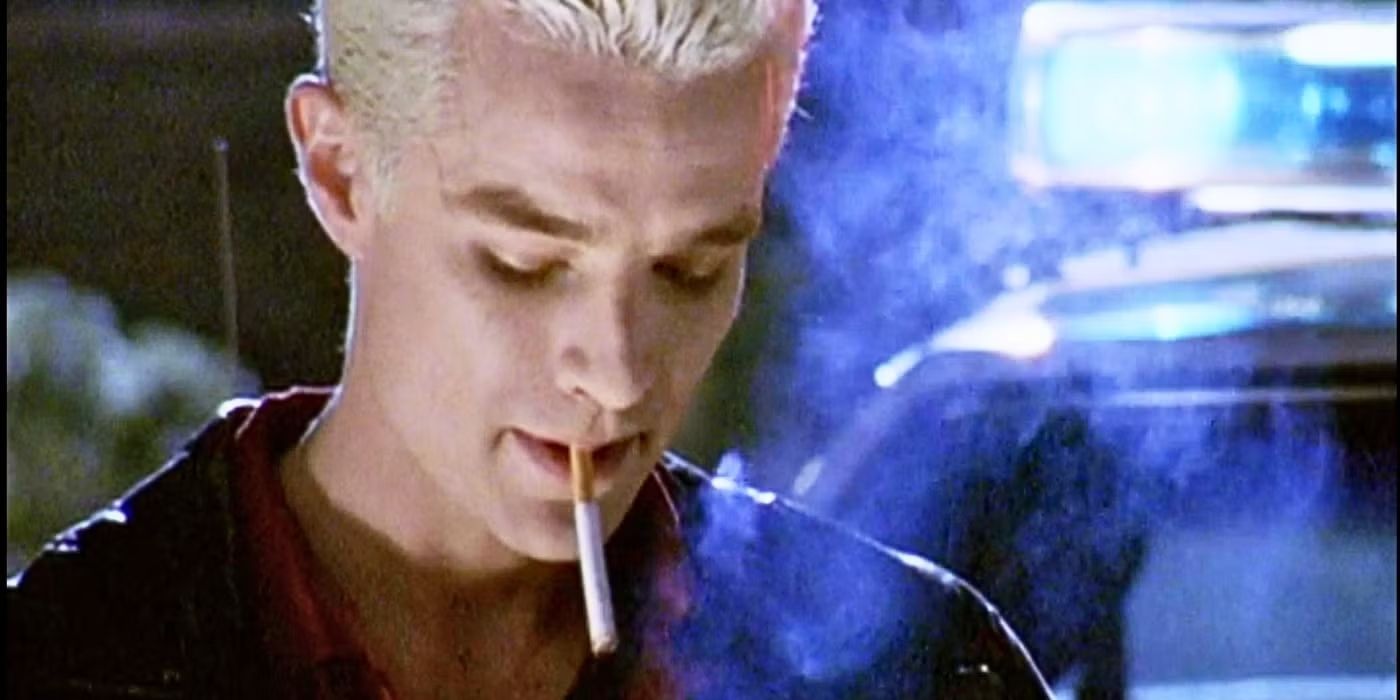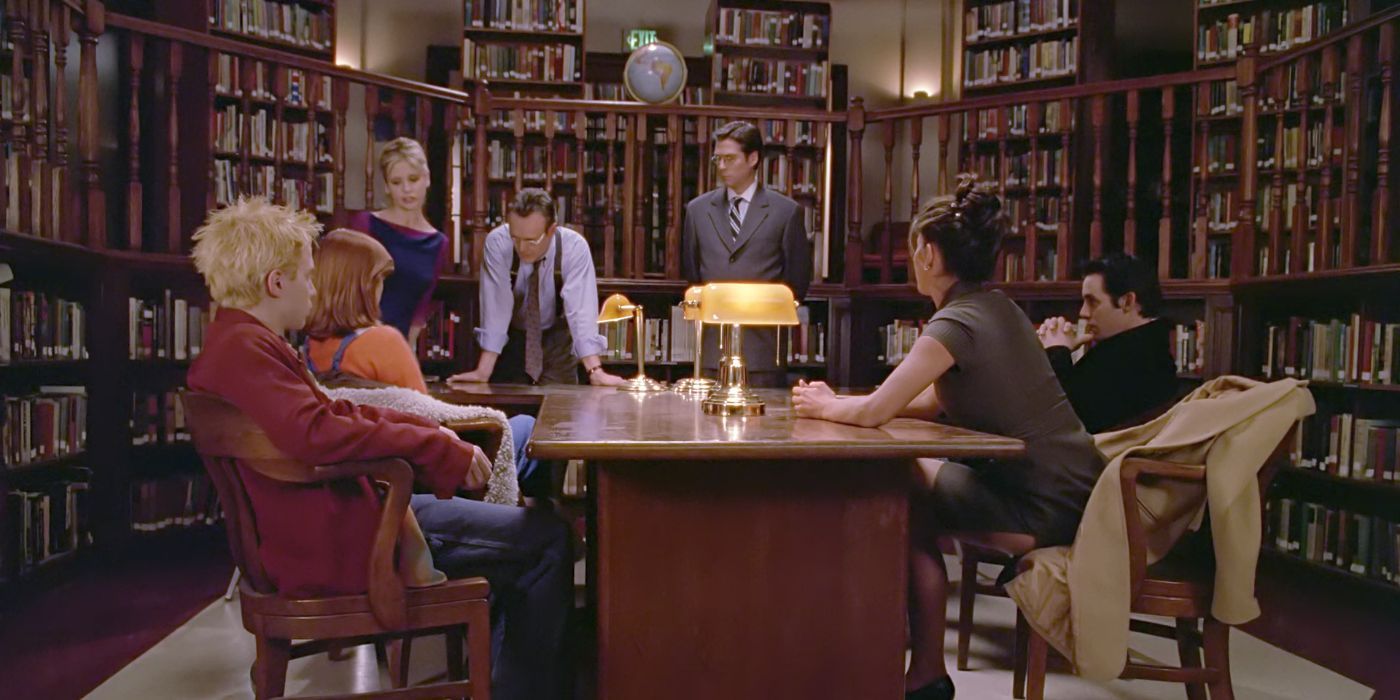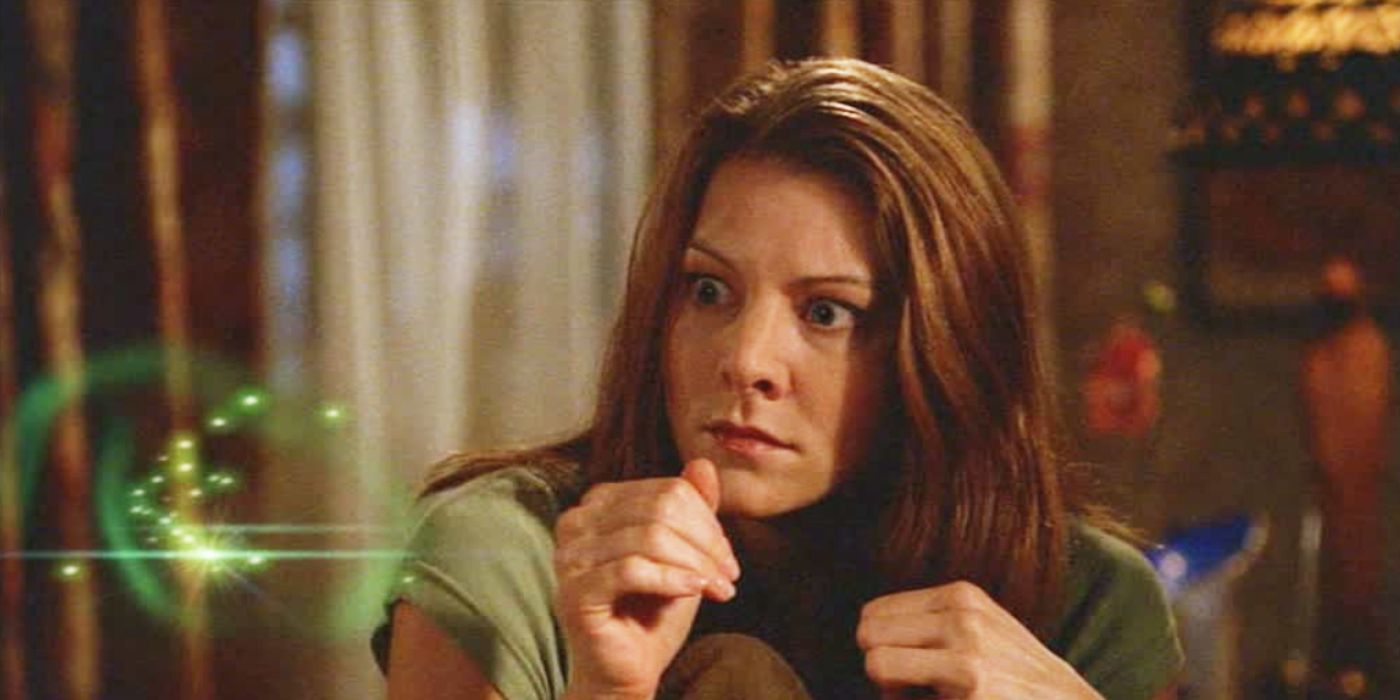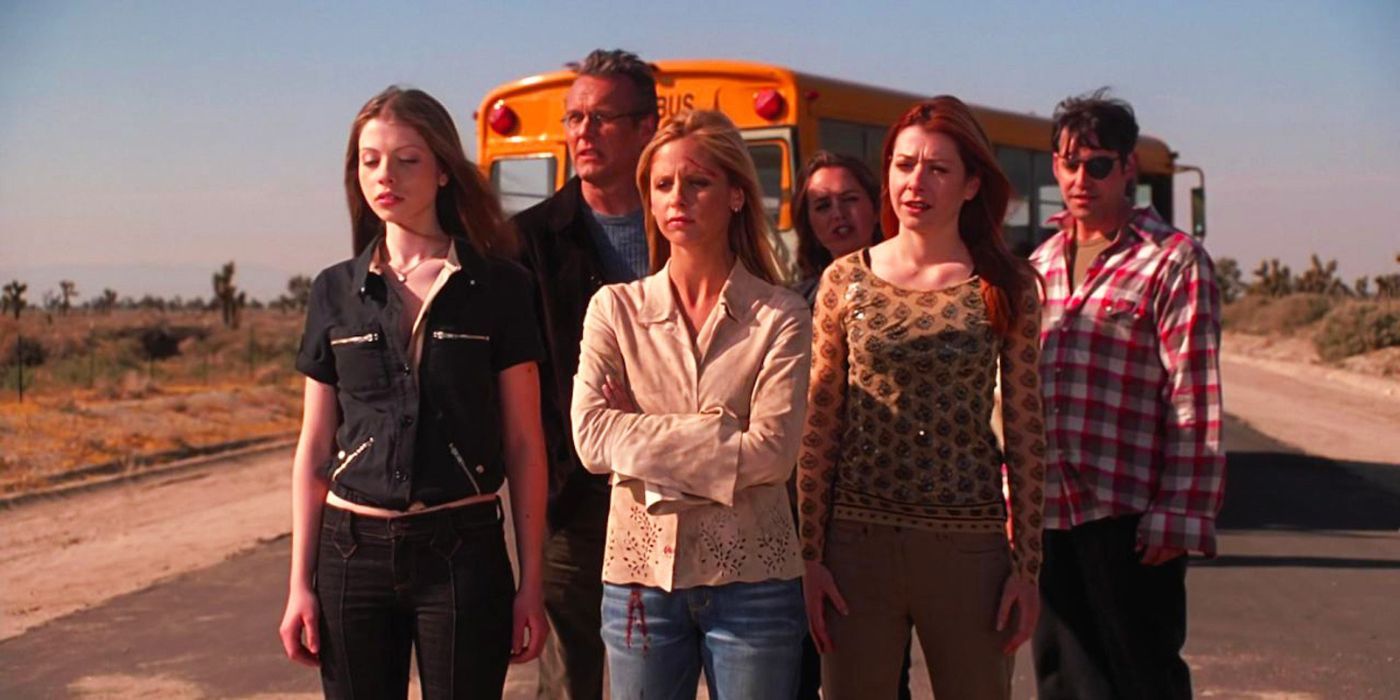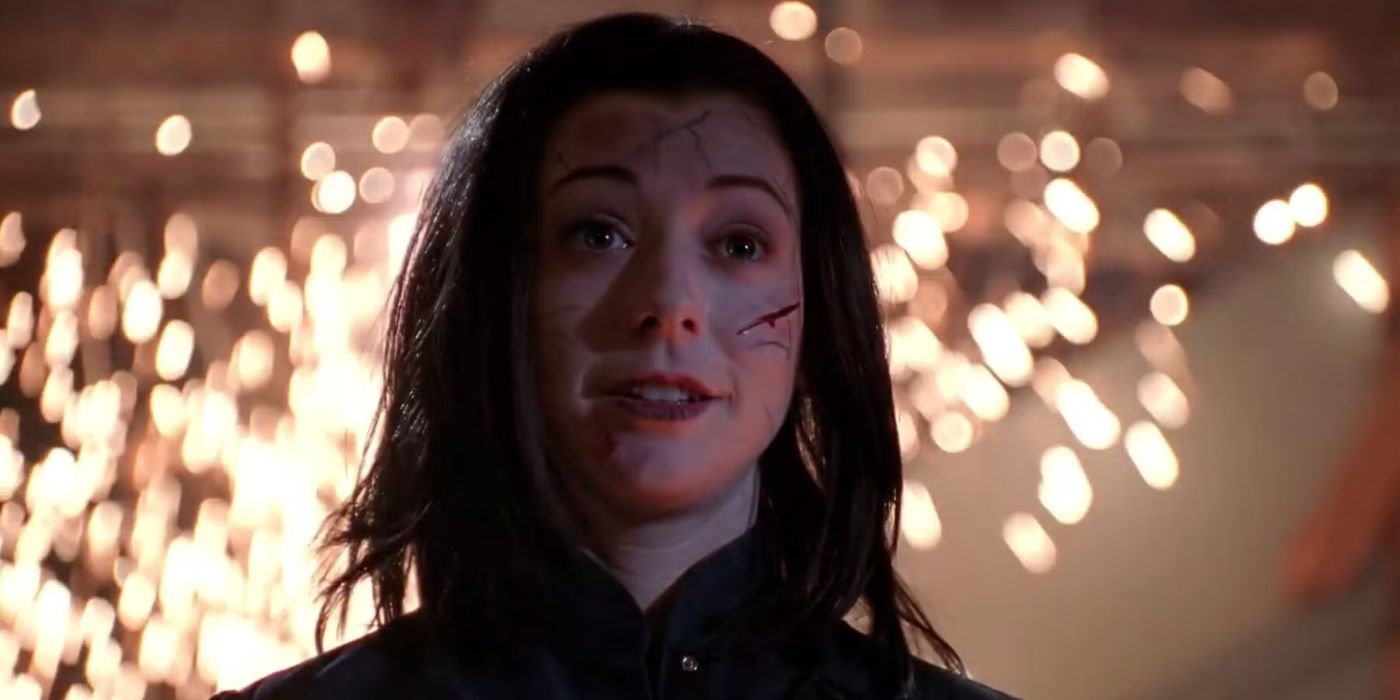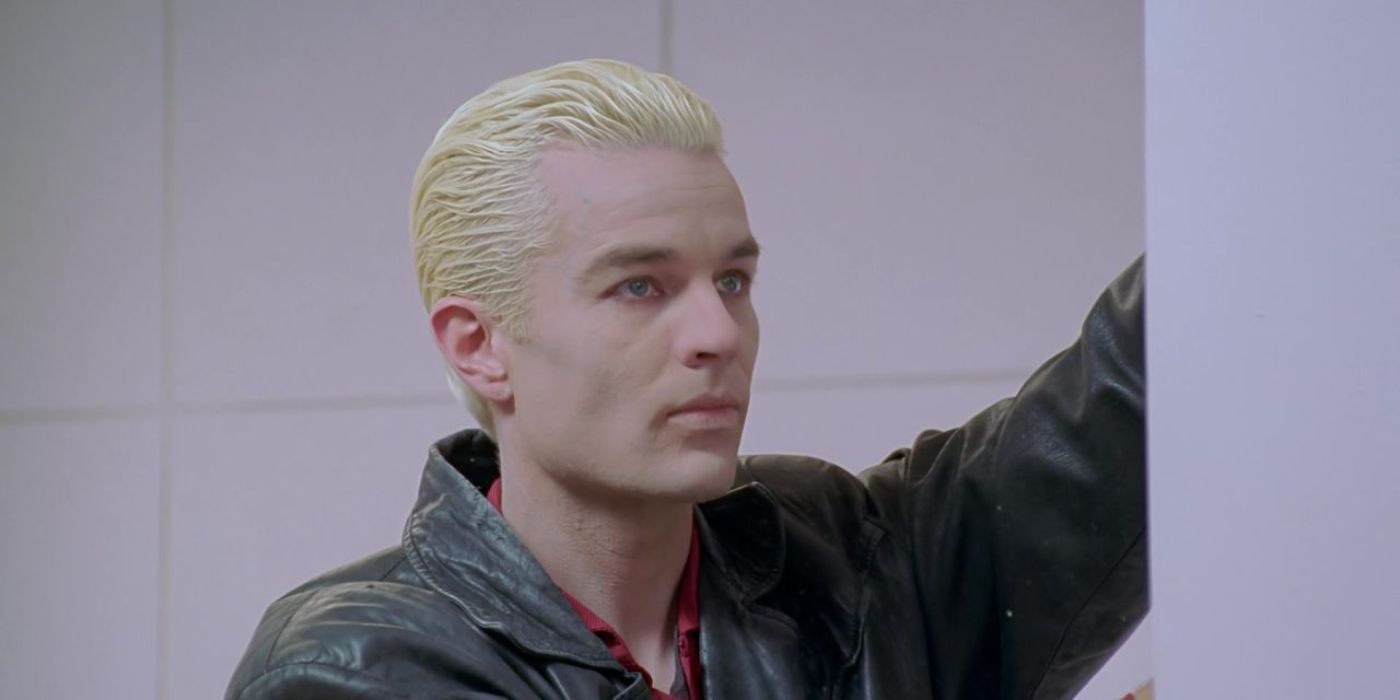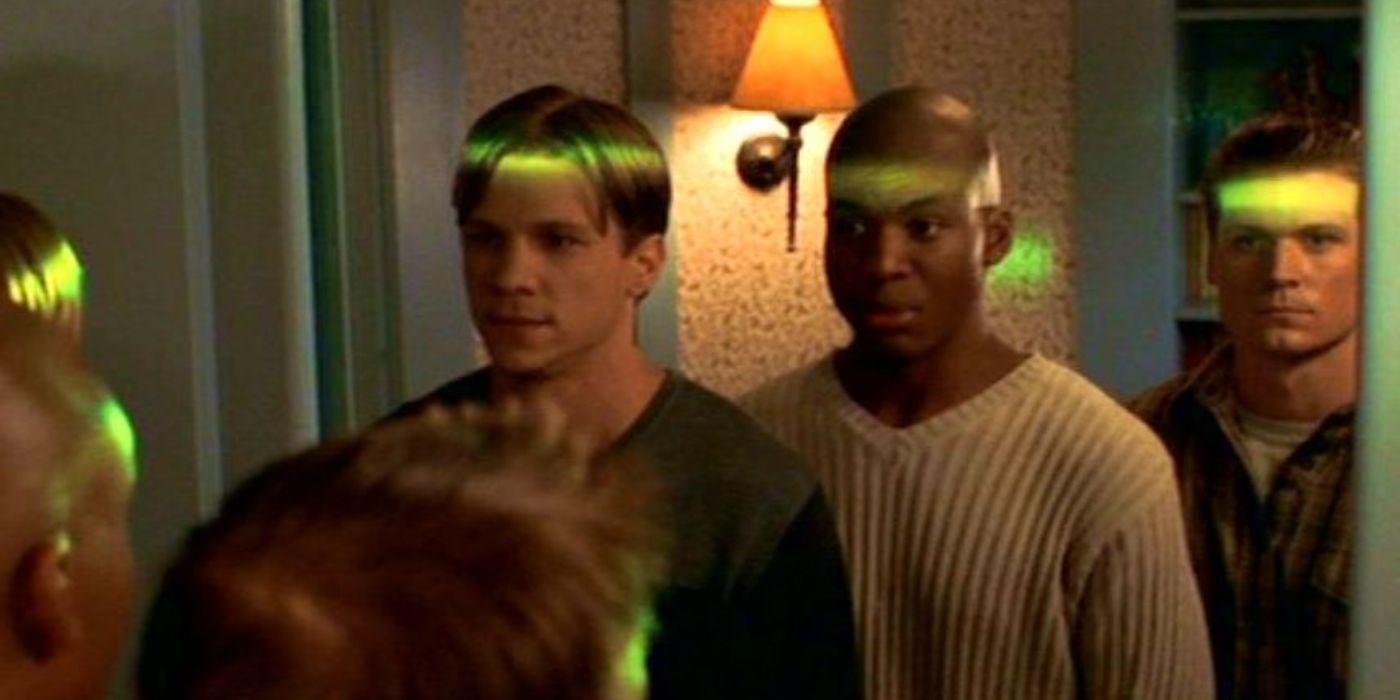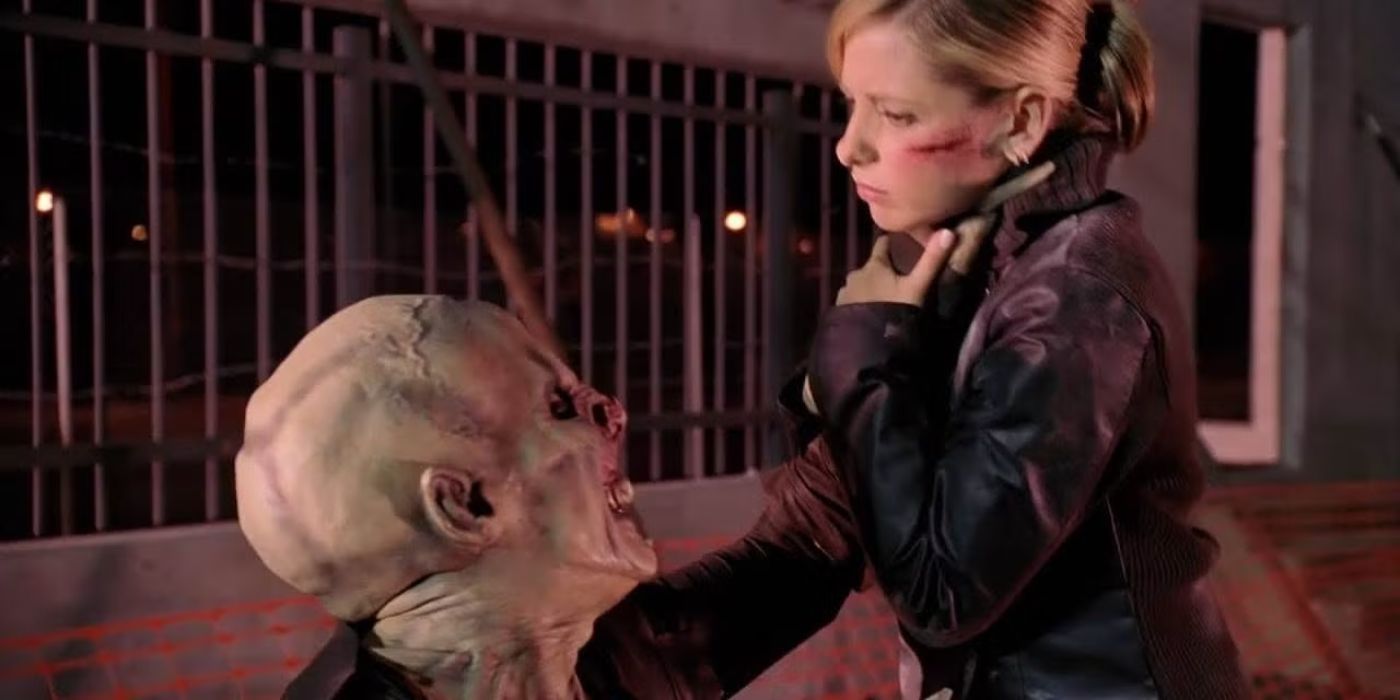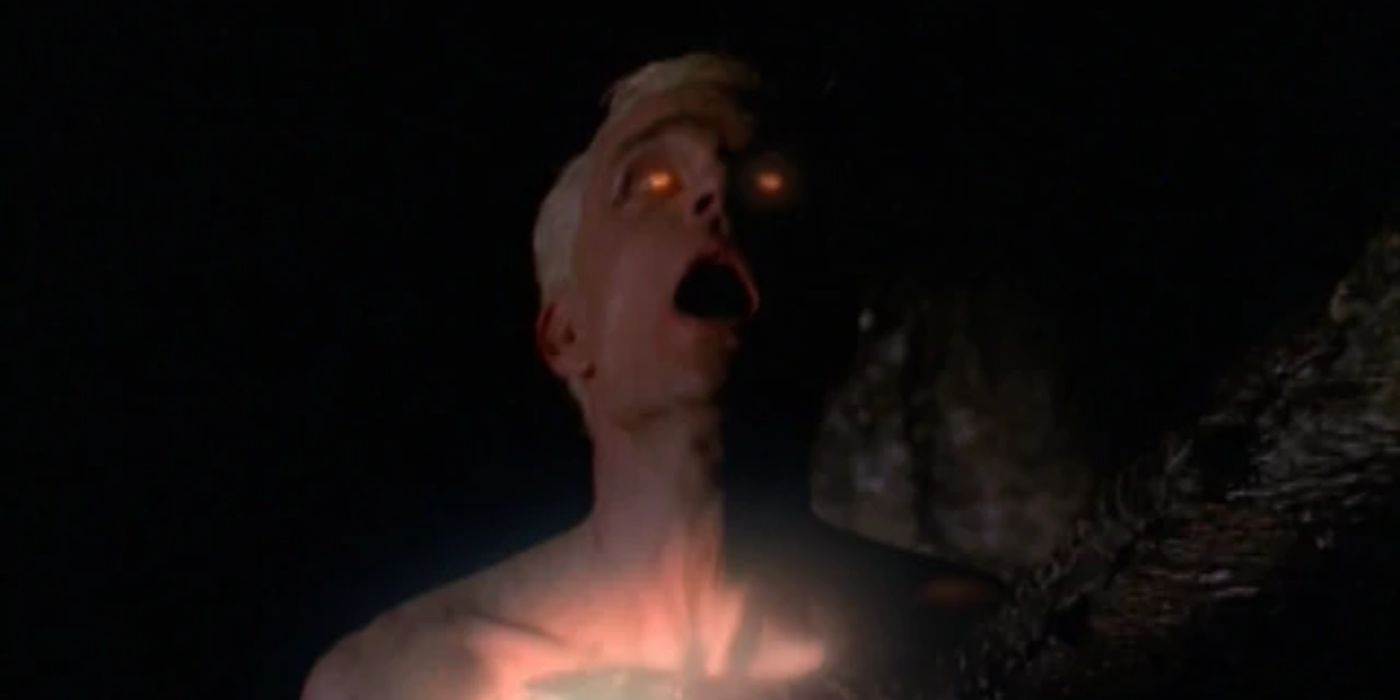
Buffy the Vampire Slayer has continued to reel in re-watchers and first-time bingers since it aired its final episode more than 20 years ago. Every episode expands and builds a supernatural world unlike anything depicted on television. There are vampires, of course, but also witches, werewolves, ghosts, and even vengeance demons, hell gods, demonoid soldiers, among other nasty creatures. Buffy (Sarah Michelle Gellar) and her Scoobie gang, including her best friends Willow (Alyson Hannigan) and Xander (Nicholas Brendon), and her Watcher, Giles (Anthony Head), annihilate everything that comes their way, without fail, as the story continues to thicken and build intrigue.
However, Joss Whedon‘s supernatural coming-of-age cult classic isn’t perfect, even though it sometimes feels like it with its spot-on humor, several carefully chosen plotlines, and noteworthy writing. Like every show, Buffy has many plot holes, inaccuracies, or things that just don’t make sense. They leave viewers either laughing at their stupidity or wondering what the writers were thinking, even decades later. Either way, Buffy the Vampire Slayer‘s mistakes have not ruined anything for die-hard fans. Instead, they’ve evolved into cherished gags that are part of the show’s identity.
10
Vampire Breath
Fans of the Buffyverse have long laughed at the inconsistencies of vampires having breath. During Season 1’s finale, Buffy is bitten by the Master and left to drown in a pool. After finding the Slayer, Angel (David Boreanaz) tells Xander that he can’t perform CPR on her because he has no breath. Despite this, many instances exist where vampires pant and huff during fight sequences. In Season 7, the First tortures Spike (James Marsters) by drowning him. Earlier in “Fool for Love,” Spike gasps for air as Angelus chokes him. There are even more noticeable continuity errors concerning vampires’ breathing, though. In “Becoming, Part 2,” Spike knocks out Drusilla by putting her in a chokehold. Not to mention, Spike smokes on more than one occasion.
“Prophecy Girl” was the perfect moment to bring up vampires and their non-existent breaths because it allowed Xander to become a true hero for the first time, saving Buffy. However, for some reason, the writers didn’t keep things consistent. Or maybe vampires just huff and pant because it’s just a human habit they can’t knock. Either way, this plot hole is laughable every time.
9
Buffy’s Birthday
It’s also laughable that the birthday of the show’s main character has changed more than once and for no reason. In 1997, Buffy becomes a student at Sunnydale High during her sophomore year and turns sixteen by the end of Season 1. However, in “I Robot…You Jane,” Buffy’s birthday gets a bit confusing. The demon Moloch finds Buffy’s school profile and her birthday, October 24, 1980. Seconds later, the same profile reads May 6, 1979, even though Buffy doesn’t turn seventeen until the next season. Even the first date is wrong. In Season 4’s “Doomed,” the mystery thickens when Buffy claims she’s a “Capricorn, on the cusp of Aquarius.” Whedon has officially confirmed Buffy’s birthday as January 19, 1981, which aligns with the birthday episodes.
Buffy’s birthday inconsistencies might seem like a minor plot hole, but fans have always wondered about them, especially since the show became a classic. Getting the main character’s birthday down should’ve been a no-brainer from day one, but it doesn’t seem to have been. Maybe Buffy’s birthday wasn’t given too much thought so early on in Season 1 because there wasn’t a real need of it yet. It isn’t until Season 4 that she even comments on the date, throwing all the previous dates out the window.
8
The Empty High School Library
Once Buffy becomes friends with Willow and Xander, the trio and Buffy’s Watcher, Giles, make the high school library their headquarters. It’s the one inconspicuous place where they can meet up, reconvene, and research beasties, and no one will question them. Their headquarters makes it convenient if they need anything from Giles or his books on the occult, and their meetings go mostly uninterrupted. However, that’s because no one apart from the Scoobies ever enters. The writers poke fun at this a couple of times, including in Season 2’s “Passion,” when a student named Jonathan comes into the library and asks for some books on Joseph Stalin. The gang is shocked by his entrance, reaffirming that it’s strange for someone other than them to enter the library.
Viewers never learned why students steer clear of the library, so it became a gag on the show. The headquarters of the Slayer hides in plain sight, almost like it’s hidden or there’s a spell to keep others out. However, there’s no magic involved here. They meet and talk about heavy things in a very public place, yet they’re rarely interrupted. Maybe the high school students know enough about Buffy to stay away, or perhaps they sense the Hellmouth’s presence and avoid it at all costs.
7
Amy Knowing About Rack After Being a Rat for Three Years
In Season 3 of Buffy the Vampire Slayer, Amy (Elizabeth Anne Allen), Willow’s friend and fellow witch, turns herself into a rat to escape the bewitched townsfolk who want to burn her at the stake. While Willow is saved, Amy remains a rat for three years until Willow is powerful enough to change her back. Amy has no idea she was a rat and quickly becomes a bad influence on Willow, pressuring her to do heavy magic. Having not been back to normal for very long, Amy suggests they see a friend of hers, Rack, a warlock who supplies addictive dark magic. This leads Willow down a bad path. However, details about Amy’s return don’t make sense.
How does Amy still know how to do powerful magic after years of being a rat? Surely, she has to be a bit rusty. It’s hard to believe she’d be back at it again so well just when the plot needs her as a bad influence on Willow. Also, how does she know Rack is still around after her long absence? How does she know where to look for him? Rack’s place is cloaked, and even though Amy is powerful enough to sense where it is, the location couldn’t have stayed the same over the years. Either way, nothing about Amy’s return makes sense and seems to work for Willow’s subplot too well.
6
Buffy Staying In Sunnydale
In Buffy the Vampire Slayer‘s old intro, Giles says: “Into every generation, a slayer is born: one girl in all the world, a chosen one.” When one Slayer dies, another is called to fight the forces of darkness alone. Buffy complicates the Slayer line when she dies at the end of Season 1, but that’s not what’s truly confusing about her time as Slayer. She moves to Sunnydale, where a major Hellmouth is located, and stays there until the series finale’s epic final battle swallows the entire town. Why does she stay in Sunnydale for so long?
Sunnydale isn’t the only place in the world located on top of a Hellmouth or the only town plagued by evil. Yet, Buffy stays and seems to be the only Slayer who sticks to one area. In Season 1, when Kendra arrives at Sunnydale, it’s clear she’s only there to stop the immediate big bad and move on to the next infested area. Keeping Buffy in Sunnydale for so long centralizes her story, keeping it in one area to minimize confusion. However, it’s not exactly explained why she doesn’t visit other places that might have massive threats. Buffy has enough going on in Sunnydale, but an explanation of why she didn’t travel to other Hellmouths, at least sometimes, would’ve been interesting to hear. Also, there’s one Slayer; why does Sunnydale get to hog her?
5
Willow Getting Addicted to Magic After Using It for Years
In Buffy the Vampire Slayer Season 6, Willow becomes addicted to magic. Bringing Buffy back from the dead is a massive feat for her and paves the way for more witchcraft. Eventually, she becomes completely reliant on magic, which concerns Tara and ultimately leads to their breakup. Things get worse when Amy convinces her to do heavier spells and introduces her to Rack. Just when Willow has put her addiction behind her and has gotten back with Tara, Warren accidentally shoots Tara, killing her. Willow tries the same spell that brought Buffy back, but it doesn’t work, as Tara is a human who died naturally. This brings about Dark Willow, who becomes so powerful that she needs the power of an entire coven of witches and Xander’s love to help bring her back to normal before she brings about hell on earth.
Having Willow get addicted to magic after using it since Season 2 is strange. It doesn’t make much sense that bringing Buffy back would kick-start an obsession when she’s done pretty big spells before. She restores Angel’s soul, and let’s not forget her infamous “My Will Be Done” spell. Willow also uses a forcefield and a teleportation spell against Glory’s attacks. After Buffy goes catatonic in “Spiral,” Willow performs a spell allowing her to enter Buffy’s mind and interact with it to bring her back to reality. Granted, a resurrection spell is dark and on another level, but still. Then, in Season 7, Willow does even greater spells, throwing everything about her struggles in Season 6 out the window. Nothing adds up here.
4
Spikes Chip
In Buffy the Vampire Slayer Season 4’s “The Initiative,” Spike is held captive by The Initiative, a secret government agency tasked with capturing and researching demons for military purposes. When they capture Spike, or Hostile 17, they implant a cerebral microchip with behavior-modification circuitry in his brain that renders him unable to willingly harm or attempt to harm humans without causing him debilitating neurological pain. However, Spike’s chip conveniently only starts working when his subplot needs it. He suffers no pain while beating up several Initiative scientists while escaping, but when he tries to bite Willow, it fires. Maybe the chip wasn’t activated yet, or maybe the writers hadn’t come up with the science behind the little piece of machinery this early. Either way, the chip doesn’t ever make sense.
After getting the chip, Spike cannot hurt or feed on humans—however, the rules of the chip change throughout the show. In Season 5’s “Fool for Love,” Spike explains that it reads his intent, so he could hit Buffy if he knew he would miss. In “Family,” Spike punches Tara to determine if she is a human or a demon, indicating the chip knows. But how does the chip know if Spike is hitting a human or a demon when he doesn’t even know? In Season 6, Spike realizes he can hit Buffy after she returns from the dead. How does the chip know Buffy died? How does it even sense something different about her (which she verified there isn’t)? It makes the chip seem almost supernatural in some way. Ultimately, Spike decides to get the chip removed once it starts malfunctioning, convinced his soul will keep him from killing again.
3
No One Knowing About the Initiative
As mentioned, The Initiative is a secret government agency tasked with capturing, researching, and experimenting on demons for military purposes. It’s led by Maggie Walsh and stationed in a massive facility underneath the UC Sunnydale campus. The Initiative appears to be simply containing “hostile subterrestrials” — demons —but they’re secretly working on the 314 Project, which is meant to create biomechanical demonoid, cybernetically enhanced super-soldiers. The Initiative’s existence is a big bomb that’s dropped on viewers. Still, not everything about their story was planned and thought out well. Plot holes the size of the future Sunnydale crater form as soon as Buffy and the gang meet the G.I.s.
Despite being a secret government agency, The Initiative suddenly forgoes its stealthiness at the right moment. Buffy and the gang spot them walking around for the first time during Season 4 on Halloween, though they think they’re dressed in costumes. It seems pretty convenient that they choose not to be so secretive around the time when the show is open for their subplot. Whether they’re secretive or not, though, how has no one known about them this whole time? Considering the magnitude of their operation in Sunnydale, it’s safe to say they’ve been in town for a while. Not even Angel, Spike, or anyone else has gotten a hint about their existence. Ultimately, The Initiative’s story could have been more fleshed out. Instead, they seem to have been dropped into the story at the right moment but had always been in Sunnydale.
2
Turok-Hans’ Changing Beatability
The Übervamps’ power inconsistency is something Buffy the Vampire Slayer fans have long recognized as one of the show’s biggest plot holes. In Season 7, Episode 10, “Bring on the Night,” Buffy is nearly killed by an Übervamp (Turok-Han). She would’ve been if it weren’t for the First Evil’s orders. The encounter sparks enough panic for the Scoobies to do some heavy research into how to kill them. It’s scary when the Übervamp nearly kills Buffy as she’s come in contact with many powerful creatures. As the show’s final villain, the Übervamp needed to pack a powerful punch that would put even Glory in her place. Sadly, the Turok-Han doesn’t exactly keep their edge.
There are thousands of Übervamps under Sunnydale, an immense army that seems to have sprouted out of nowhere, no less. Looking at their massive size and sheer power, they seem unbeatable. This seems likely, as all Buffy has are inexperienced Potential Slayers, a detoxing witch, and a necklace with unknown power for the final battle. They’re extremely outmatched and under-prepared, yet somehow, they march on to battle. Then, a miracle happens. With or without Willow turning all the Potentials into real Slayers, the Übervamps’ powers seem to dwindle, and the gang cuts through a hefty amount easily. So, the show’s writers made the Übervamps too powerful to be believably beaten by Buffy and the Potentials and then made them too beatable during the final battle. Their depreciated power is never explained and ultimately harms the authenticity and momentousness of the final battle.
1
Vampires and Losing Their Souls
In Buffy the Vampire Slayer, when a human is turned into a vampire, they lose their soul and become a demon. Throughout the show, Buffy and the Scoobies constantly reiterate that, since vampires have no souls, they are evil, selfish creatures incapable of loving others or showing affection. They don’t have any morals and will always be self-serving psychopathic murderers who only care about feeding and killing. The only vampires who make this very black-and-white notion confusing are Angel and Spike.
For years, Buffy and the Scoobies used Angel as a textbook case of vampires with souls. Angel is a notoriously evil vampire before vengeful gypsies curse him by returning his soul, rendering him remorseful and able to fall in love with Buffy. It’s like flipping a switch. He has two personalities. When the soul disappears, he’s back to being evil. Buffy defends dating and falling in love with him because he has a soul, but having a soul doesn’t stop someone from being evil and killing. Then, when Spike falls in love with Buffy, he’s laughed at because unsouled vampires aren’t capable of love, according to them. Spike proves he can love without a soul. Unlike Angel, his temperament remains unchanged when he gets his soul back. So, having a soul doesn’t technically mean anything or change a person. The show’s writers couldn’t keep the story straight and chose when they wanted souled vampires to mean anything.

